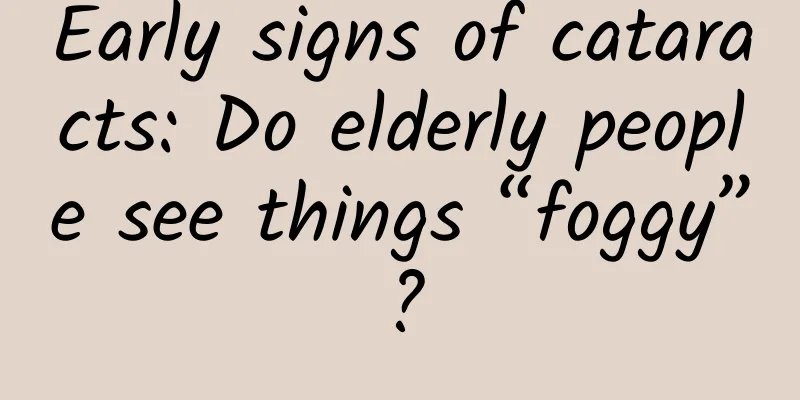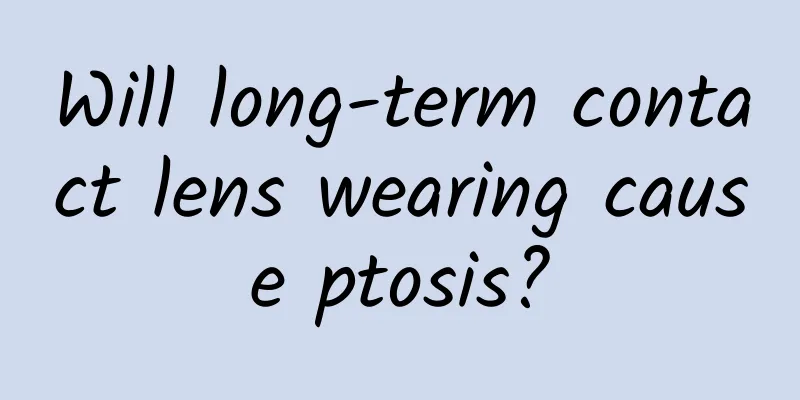Early signs of cataracts: Do elderly people see things “foggy”?

|
Some elders may suddenly find that the clear world seems to be covered with a layer of light fog, and they see things "foggy", as if they are looking through a layer of frosted glass. Many people think that this is a normal manifestation of presbyopia or vision deterioration, and often ignore that this may be an early sign of cataracts. Next, let's start with the most easily overlooked details in life, and scientifically understand the early manifestations and causes of cataracts, so as to help the elders at home or those around them who have needs to deal with it early. 1. Blurred vision appears quietlyCataracts do not make people "blind" all of a sudden, but have a relatively slow development process. Although its most typical symptom is blurred vision, in the early stages, this blurriness is often not obvious, and may even only appear during certain periods of time or in specific environments. For example, at noon when the sun is strong or at night when the lights are dim, the elderly may feel that there is always a faint mist in their vision, and the outlines of objects begin to become less clear. Many people simply attribute this situation to "old age, eyes are always a little worse." In fact, this is an early signal: when the lens begins to become cloudy, the passage of light through the eye is no longer unobstructed, and it will make us see things as if there is a layer of mist. Over time, if there is no timely attention or basic eye examinations, the patient's field of vision will gradually decrease, and they may even need to squint or wipe their eyes frequently, thinking that this can "wipe away" the layer of fog, but it often has little effect. 2. Changes in Visual SensitivityCataracts are often accompanied by changes in visual sensitivity. Some elderly people will find themselves "afraid of light" or feel that the outdoor sunlight is dazzling in the early stages, and they have to squint and frown frequently; others will feel that the indoor light is too dim, and it is particularly difficult to read a newspaper or walk. Some people also experience double vision or multiple images in daily life. For example, when looking at a light bulb, a "circle" or a strange light and shadow that is "divided into many" will appear in front of their eyes. Although these manifestations are not unique to cataracts, when multiple symptoms appear together, special attention should be paid. Routine vision screening and slit lamp examinations are not complicated and can be performed in community hospitals or ophthalmological institutions. Once lens opacities are found, timely measures can often prevent the condition from further deteriorating. 3. Influence of Age and LifestyleAs people age, the lens of the human body will gradually harden and become cloudy. Coupled with the accumulation of ultraviolet rays and the influence of chronic diseases (such as diabetes, high blood pressure, etc.), the incidence of cataracts will continue to rise. However, it does not mean that you will be "targeted" by cataracts when you get older. Some elderly people can still maintain good eyesight even in their seventies and eighties, while others may find that their vision has become blurred at an earlier stage. This includes both congenital physical factors and is closely related to daily lifestyle, chronic disease management and eye care. For example, frequent activities in strong sunlight without protection, or long-term lack of vitamins and antioxidants in the diet can easily cause excessive damage to the lens, thereby accelerating the formation of cataracts. 4. Dull color: Another important signMany elderly people will gradually feel that the bright colors they are familiar with are no longer bright, and the world seems to be filtered through a gray filter. A flower that was once beautiful now looks a little "faded", and the original blue of clothes seems to have turned into a dark blue. This phenomenon often develops slowly, so it is easy to be ignored. In fact, it also means that the opacity of the lens is getting worse. If family members observe carefully, they can consider the possibility of cataracts when the elderly repeatedly mention that "the colors don't seem as bright as before." 5. Timely inspection and appropriate maintenanceWhen elderly people experience persistent blurred vision or obvious vision loss, they should go to an ophthalmology clinic or hospital for a basic eye health check as soon as possible. The process is not complicated. Routine naked eye vision and corrected vision measurement, coupled with instrument examination of the lens, can roughly confirm whether there are cataracts or other eye problems. It should be noted that cataracts not only occur in the elderly, but middle-aged people may also experience similar symptoms early due to life pressure or disease factors. Therefore, no matter how old you are, you should have regular eye examinations to ensure early detection and early response. In addition, daily maintenance is equally important. A healthy diet, adequate intake of vitamins and antioxidants, more fruits and vegetables, and avoiding high-sugar and high-fat diets are beneficial to eye health. Pay attention to sun protection during outdoor activities, wear a sun hat or use sunglasses to reduce the damage of ultraviolet rays to the eyes. When using your eyes, try to avoid looking directly at strong light for a long time to reduce eye fatigue. Developing these good habits will have a positive effect on delaying the progression of cataracts or other eye diseases. 6. Take care of the elderly’s eyesight and make life clearerIf the elders in your family often complain recently that "the eyes seem to be foggy and can't see clearly", don't simply confuse it with ordinary vision aging. Although vision deterioration is common in the elderly, the "foggy" vision sometimes indicates that the lens is beginning to become cloudy, which is a typical early signal of cataracts. As long as we pay attention to these details, we can help the elderly to receive timely examinations and confirm whether further attention or intervention is needed. In daily life, maintaining good eye habits and a healthy lifestyle can slow down the progression of cataracts to a certain extent, allowing the elderly to still clearly appreciate the beauty of life in their later years. As family members or friends, show more care and communication. Once you find any clues, take the elderly for examination as soon as possible to avoid dragging small problems into big troubles. I hope more people can be inspired by this popular science, so that we can all bring more light and color to the lives of the elderly in their later years. Author: Zhou Zhanwen, Department of Ophthalmology, Zhongshan Hospital, First Affiliated Hospital of Guangzhou University of Chinese Medicine |
<<: Beware! The "cute pets" in Nezha 2 are actually the source of Class A infectious diseases!
Recommend
Exercise that helps with production
Nowadays, there are many exercises that can help ...
What to do if you have excessive heat during breastfeeding
Many mothers often suffer from weak qi and blood ...
Is it normal to have breast milk without being pregnant?
Everyone knows that milk is a nutritious liquid s...
What is the method of scraping face thinning
Many people say that this is an era where looks m...
There are blood clots in menstruation that are like meat. The reasons are so complicated.
Some women find that menstruation is accompanied ...
How to maintain red coral jewelry
When people buy jewelry, they are most concerned ...
What to do if I have stomach pain and yellow vaginal discharge
Abdominal pain, commonly known as stomach pain, i...
There is a hard lump in the milk
According to information from the Internet, the p...
Do women wear underwear under their swimsuits?
Swimming is becoming one of the more and more pop...
What to do if your menstrual flow suddenly increases
I believe that everyone has a certain understandi...
What are the advantages and disadvantages of eating hawthorn cake? How to make hawthorn cake with hawthorn
Hawthorn cake tastes sweet and sour, and contains...
Improper exercise can cause damage to your joints. Authoritative experts give you scientific exercise tips
Learning to exercise scientifically can not only ...
A woman dreams of drinking water
Water is an essential element. In addition, water...
Laundry detergent plus 84 has almost no disinfection effect? Disease control experts: The correct usage is...
Expert of this article: Yang Chao, PhD in Chemist...









